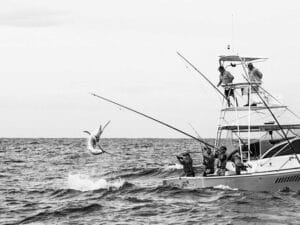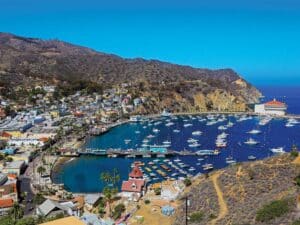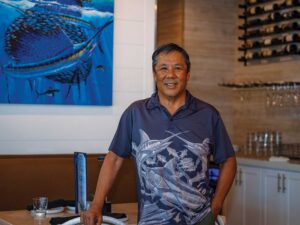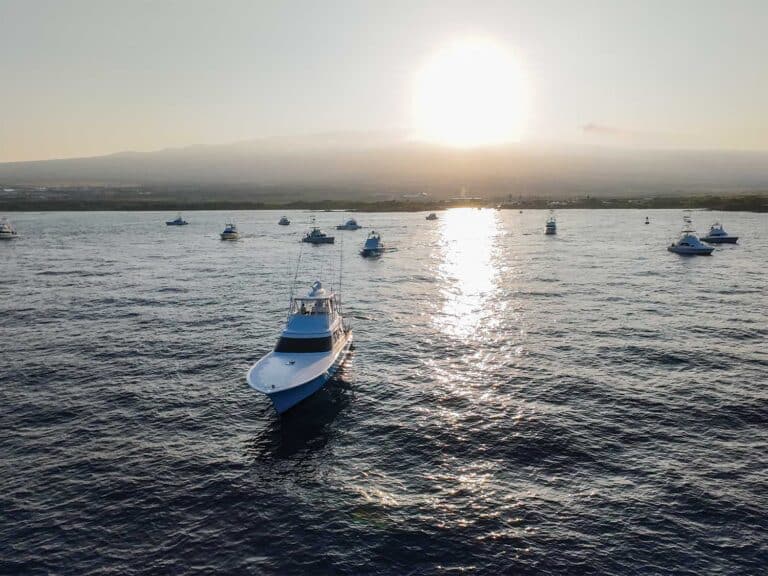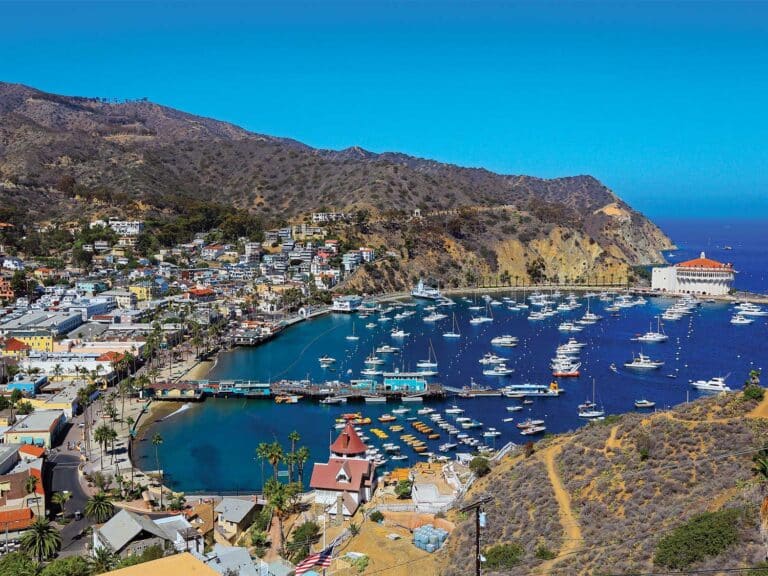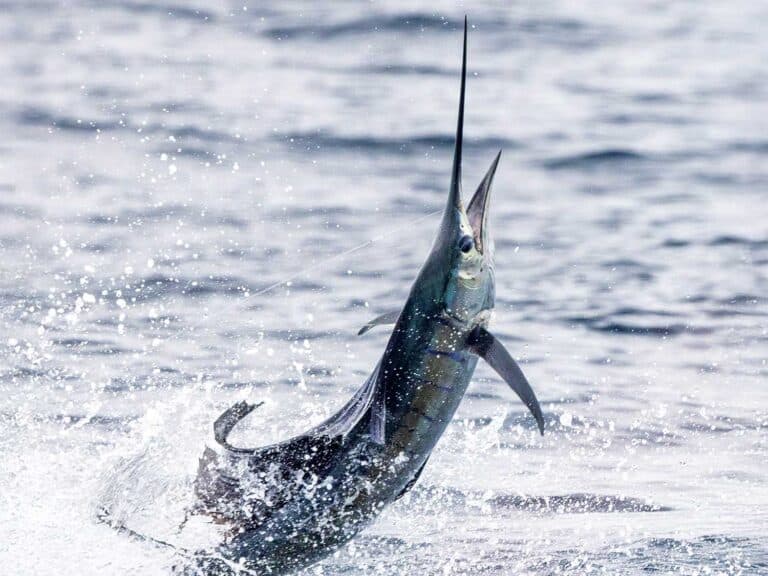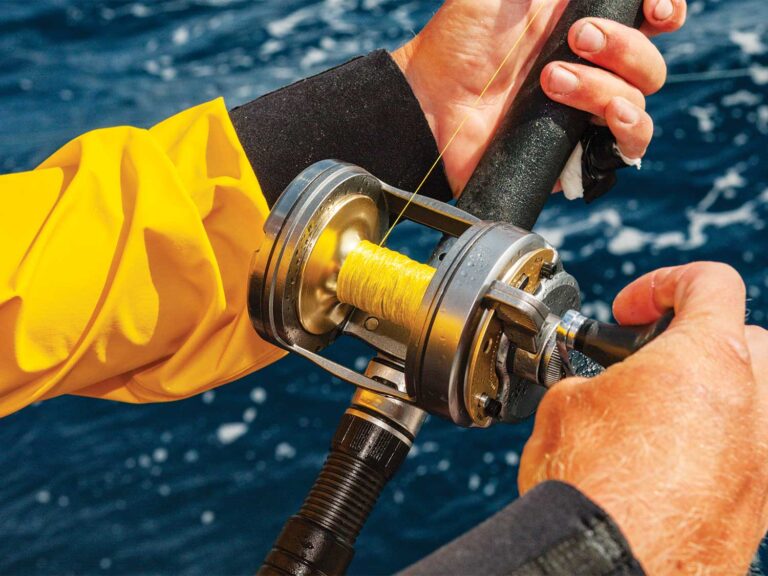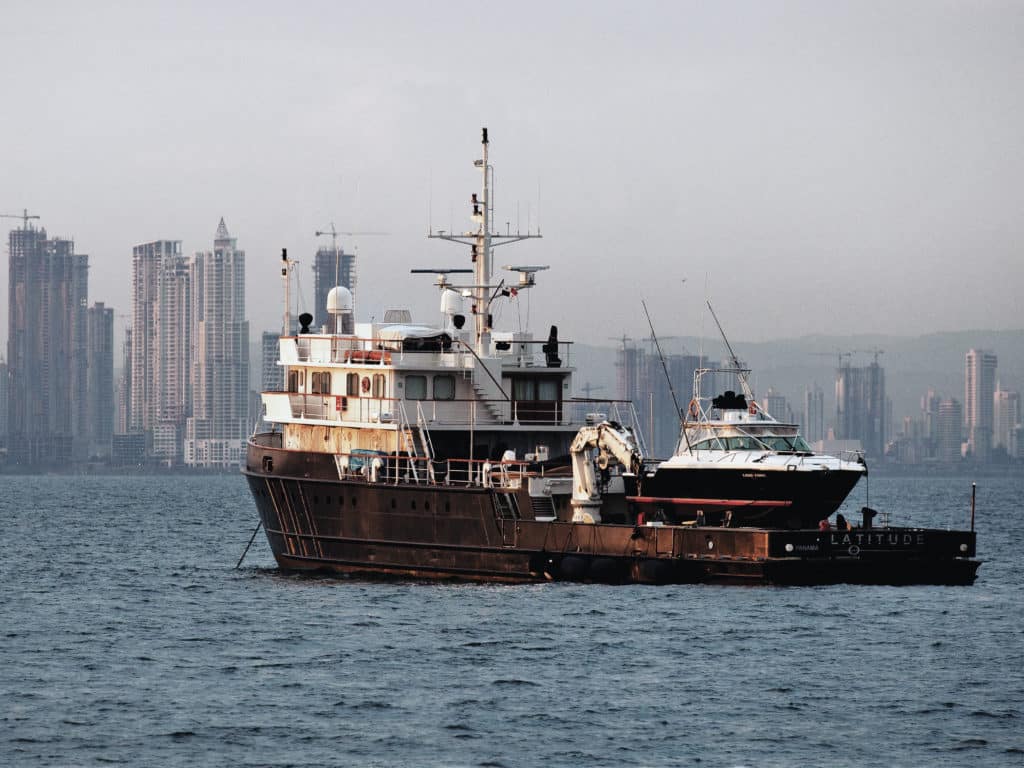
Ever since Zane Grey shoved off from California to fish and explore the waters around the Baja Peninsula and the Sea of Cortez on his 190-foot three-masted schooner, Fisherman, intrepid anglers have pushed the limits and found ways to make traveling and fishing in far-flung spots a relative comfort rather than a chore. Grey pioneered the whole mothership experience out of necessity; in 1925 there were few places that had any kind of accommodations or amenities for either boats or fishermen along the Mexican coastline, so he had to bring everything with him.
Grey outfitted Fisherman for the ultimate guys vacation, which he would later chronicle in the classic “Tales of Fishing Virgin Waters.” The schooner boasted nine staterooms, a carpentry shop and even a darkroom for developing film. He brought along two custom-built, twin-engine fishing skiffs that he could store and launch from the deck.
“For catching fish and battling the monsters of tropic seas, we had every kind of tackle that money could buy and ingenuity devise,” said Grey in the book.
And since fueling stations were few and far between, the mother boat also held 5,000 gallons of diesel, 5,000 gallons of fresh water and 2,500 gallons of gasoline. Grey purpose-built this boat for exploring places rarely visited by anyone, including anglers.
Today’s motherships come in a wide variety of types and sizes, and while they might not travel to places as desolate as Grey saw in the 1920s, they can still carry you to remote places in a comfort and style that few ever get to experience.
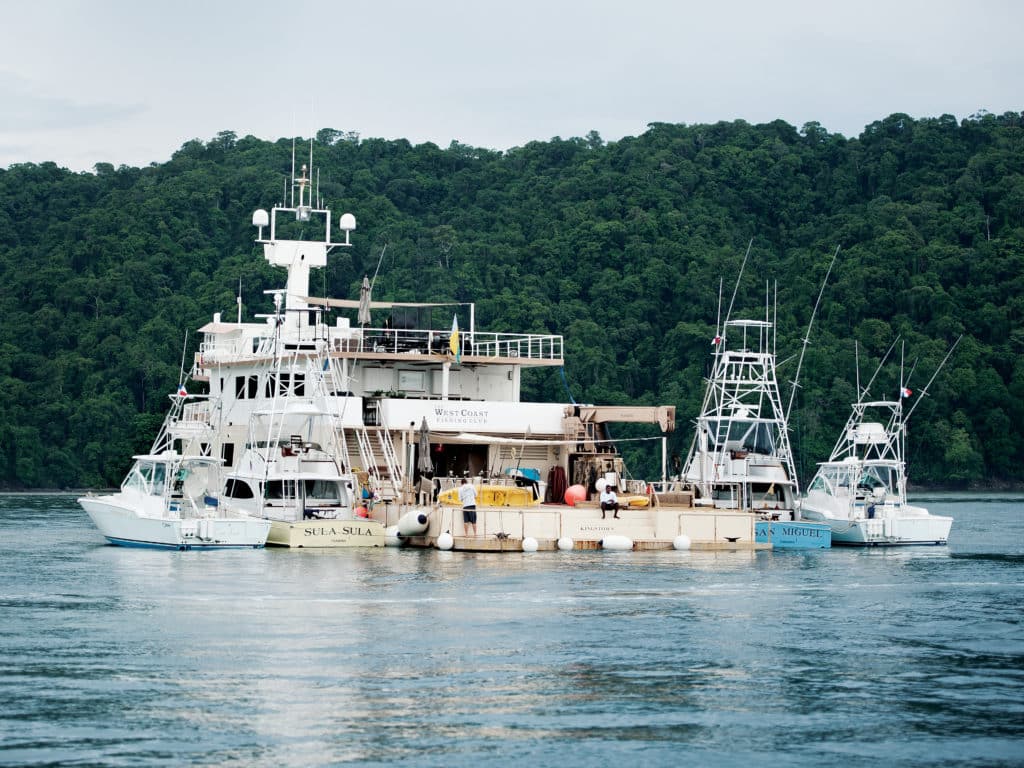
What Is a Mothership?
In our sport, a mothership is any vessel that is used as a support ship for a fishing operation. This includes three basic types: globe-trotting operations that either carry the game boat on its deck or tow it behind; a large ship that travels alongside a big-game boat that makes the trips under its own power; and lastly, ships that support game boats in a fairly localized but hard-to-reach area like the wild coast of Panama or the Great Barrier Reef in Australia. In all cases, the mothership acts as your home away from home, allowing you to extend your range and time on station in some of the most remote fishing holes.
Mike Matlack, owner of Gamefisherman Yachts, has been building boats for close to 50 years, and after building several game boats for mothership operations in the late ’80s, he became somewhat of a guru when it comes to motherships and the launching systems used to load and retrieve them. “Motherships take the adventure past where the 86-foot Merritts and 92-foot Vikings, and all these new big boats, can go,” he says. “Because no matter how big they get, they are still limited by their fuel capacity. Anybody can get on Dockwise and get mailed to someplace, but if it’s a truly remote place, the boat remains limited by fuel and other things once it gets there.
“Also, these big boats have five and six staterooms to accommodate everyone, but once they get to a fishing destination, all those staterooms go fishing with them,” Matlack adds. “And the people who don’t want to go out on a rough day, like the wife and kids, either have to go or get taken off the boat. With the mothership you can unload the game boat, and everybody gets to do exactly what they want. The nonfishing people get to enjoy the amenities on board and a crew that caters to them. They can even have some smaller boats to go exploring while the hard chargers go fishing. That’s what the mothership operation brings to the table: global exploration.”
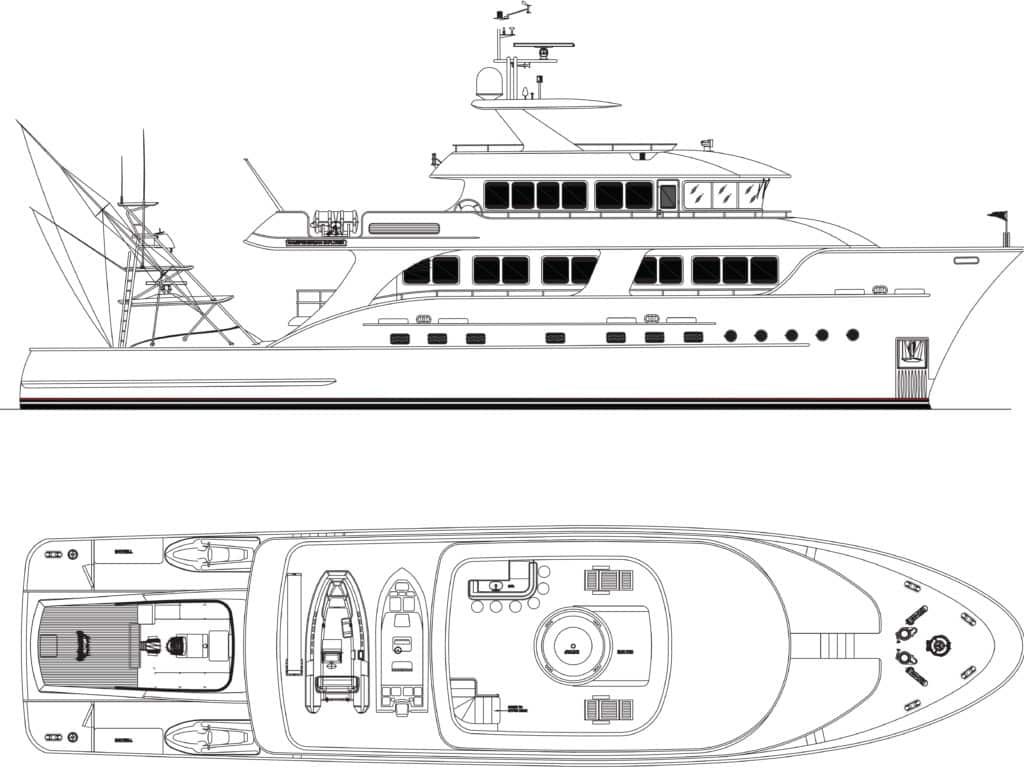
Convert or Build from Scratch
Whichever way you choose to go, just like any boat you build, you have to consider what you want to do with the operation before you get started. Capt. Billy Borer took over Jim Edmiston’s El Zorro mothership operation in 1987, eventually running both the game boat and support vessel. “We were one of the first ones, and we made a lot of mistakes!” he says. “There are a bunch of different levels in any operation, and you have to make choices. How nice do you want it to be? What level of service? You have to figure out what you are going to use it for. Are you traveling the world, or just want to be mobile like the ones on the Great Barrier Reef? When I think of a mothership, I think of a globe-trotting, traveling operation, much different from the ones on the Reef.”
As a boatbuilder, Matlack doesn’t hold back on his opinions about taking an old boat and trying to convert it into a mothership that can launch and retrieve another vessel. “We got involved with motherships by building game boats for a few of them,” he says. “The motherships were mostly conversions, and I look at those as a bunch of rust buckets that were just getting money piled into them. What happens with those old renovations is that you spend millions of dollars tearing out the old stuff and going backward, then you spend millions more going forward. Guess what? At the end of the day, you still have an old crab boat. It might have a new coat of paint for the moment, with some new motors and generators and carpeting and whatever, but it’s still an old vessel. I did the math and found out that you could start with new and come out just as good. And you can end up with a purpose-designed mothership from the get-go; not something designed to be something else.”
Edmiston converted El Zorro from a San Diego long-range fishing boat. “It was a 95-footer that was 28 feet wide,” says Borer. “It was really a cool boat, but it didn’t hold that much fuel. Our game boat, El Zorro II, was a 32-foot Sunny Briggs. The game boat fit on a cradle in the back, and we lifted the boat on and off with an articulated crane. The loading was a complicated matter, even as small as that boat was. You had to take the tower off the boat; our crane was maxed out — it was just way too complicated. We had great ideas, but the execution wasn’t always the best. I usually had to go into a harbor and rent a crane to get it on and off sometimes. I even had a logging ship off the coast of Africa put the boat back on the mothership for six bottles of whiskey.”

On and Off
During the late ’80s and early ’90s, several mothership operations plied the world’s oceans looking for the next great undiscovered hot spot. The most famous was The Madam and The Hooker, but Jim Jenks on Ocean Pacific and Jean Paul Richard’s French Look followed closely in its wake. Not one of these operations, however, used the same method to launch and retrieve their game boats, and that’s a testament to the challenges that these kind of operations face. “Loading a small boat is a piece of cake if you are at Bahia Mar or Pier 66 in Fort Lauderdale tied up to the dock,” says Matlack. “It’s another matter altogether if you are in a big bay in a foreign country fighting a surge and a crosscurrent. You have the mothership moving at some sequence of oscillation, and you’re trying to load a smaller game boat that’s dancing around like a paper cup. Somewhere during the loading equation, the two have to come together. That’s called a controlled collision.”
After building a few game boats for these motherships, Matlack wanted to figure out a way to keep the loading process from being so laborious, time consuming and harsh on the boat being put on or off. “All of the operations that were working seemed to be beating the crap out of the sport boats against a big metal hull,” he said. “A lot of it was just awkward. The Madam and The Hooker used a submersible floating dry dock. It took hours to submerge the dock into the water so the game boat could get on it, and then hours and hours to pump the water out to float it again. It was an all-day, all-crew deal. In my opinion — and they were the pioneers, mind you, and they were always thinking — but the sport boat was just too big for the mothership,” says Matlack.
Several motherships employed the use of a crane to lift the game boats on and off a custom-built cradle. “Jenks’ operation just used a knuckle boom to lift the boat, and you had straps, shackles and all kinds of lifting gear,” Matlack says. “You’d boom the entire game boat up into the air. Of course, anytime you are lifting anything on a pole, it has the potential to start swinging around. Jenks told me that he saw a shackle go by his head at 100 miles an hour one time with things busting and breaking all over the place.”
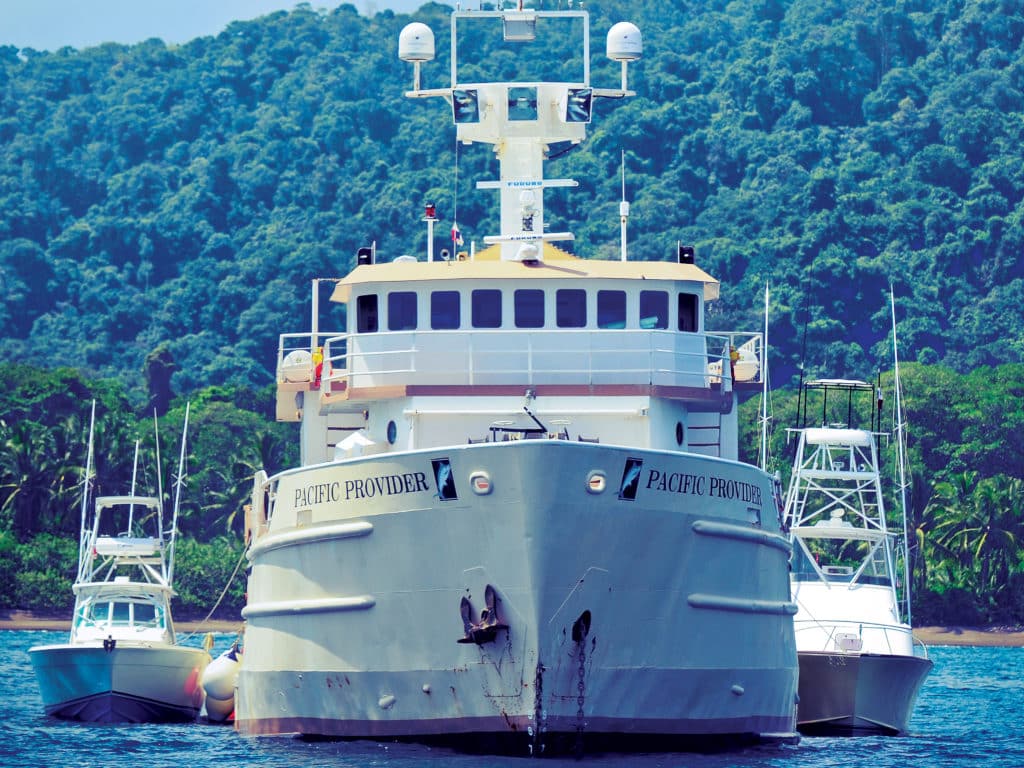
Richard’s French Look utilized a rail system to load the game boat, which started out as one of Matlack’s Gamefishermans. “French Look had a better loading system than either The Madam or Ocean Pacific,” Matlack says. “It was a railway thing. French Look started off as a Louisiana mud boat of some kind, but Jean Paul Richard finished it in Normandy, France, at a yard that did a lot of French military and government work. They must have done a lot of ships that did small-boat recovery work because that’s where that rail system came from.”
As enamored as he was with the rail system, Matlack decided to go another way when designing his custom-built motherships that range from 94 to 164 feet. He thinks the floating dry dock, similar to the one that The Madam used, would be the best bet and the easiest on the equipment. “With our dock, you don’t have to pump it up or let it down,” he says. “It floats low in the water, at just the right level that it needs to for the particular game boat you choose. The game boat slides up on a series of longitudinal bunks that would be built into the dock, and custom fit and shaped to the bottom of the boat. Once the game boat is on the dry dock, a large winch pulls the entire dock into a large well on the back of the mothership.”
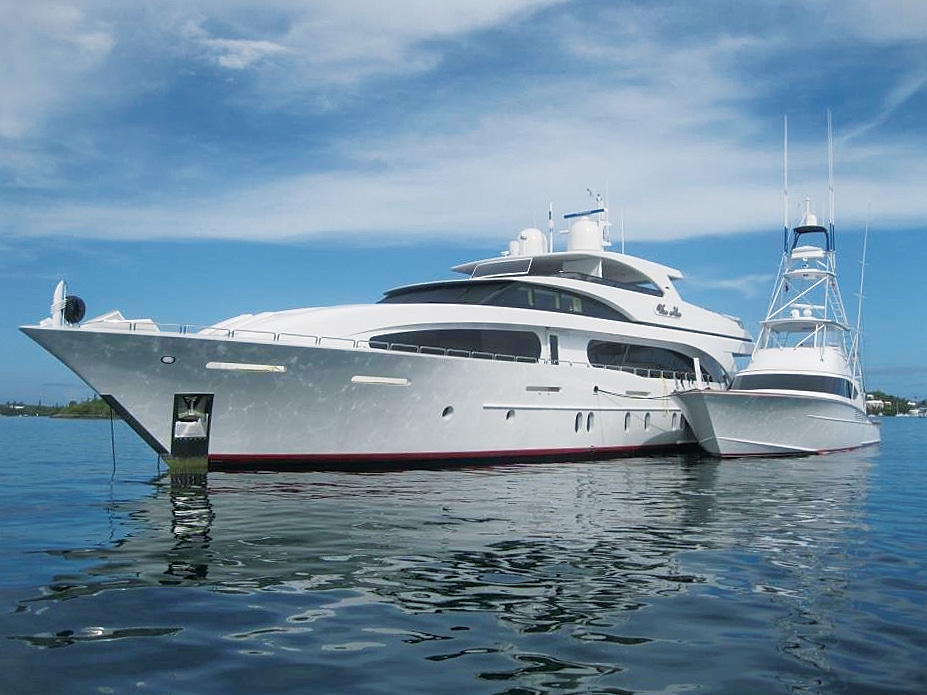
To Tow or Not to Tow
If you’re not up for the expense and hassle that come with a piggyback operation, you can always opt to tow your game boat from one place to the next. But although it will work if you are willing to take your time, towing comes with a whole host of problems. You have to chain your props to keep them from rotating, you have to keep a crew member on the towed vessel, and you have to monitor the tow rope, speed and sea state constantly, 24/7.
“Towing is a scourge of the earth,” says Matlack. “Capt. Fred Hastings out of Fort Lauderdale used to tow a 43 Merritt around, and his three rules of towing were: slow down, slow down and slow down. Once again, you have two different-size vessels trying to be happy in the same sea conditions. Well, the big vessel up front might be happy, but then you look back, and you are killing the sport boat. You normally have a mate riding back there, and that was pretty much like a death wish. The poor guy spends a lot of days by himself getting thrown around. There’s a lot to it.”
A quick glance at Matlack’s Gamefisherman website and the fabulous drawings that he has displayed are sure to make the heart of any adventurous fisherman quicken with thoughts of what if? What if you were the head of the next globe-trotting team featured in Marlin?

